A complete guide to rose disease and pest control
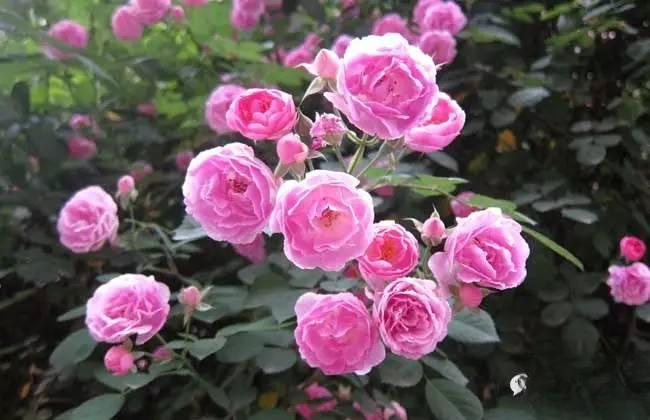
Roses are beautiful, with various shapes and colors, rich fragrance, and bloom all year round. In particular, there are many varieties and they are easy to propagate and cultivate. They are known as the "Queen of Flowers" and are one of the top ten famous flowers. However, rose diseases and pests often cause poor growth or even death, seriously affecting their ornamental value. Let's take a look at the common rose disease and pest prevention and control methods!
What are the diseases of roses?
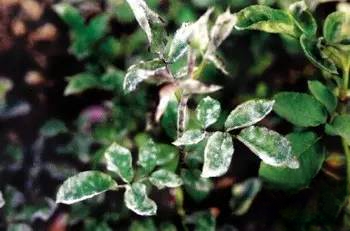
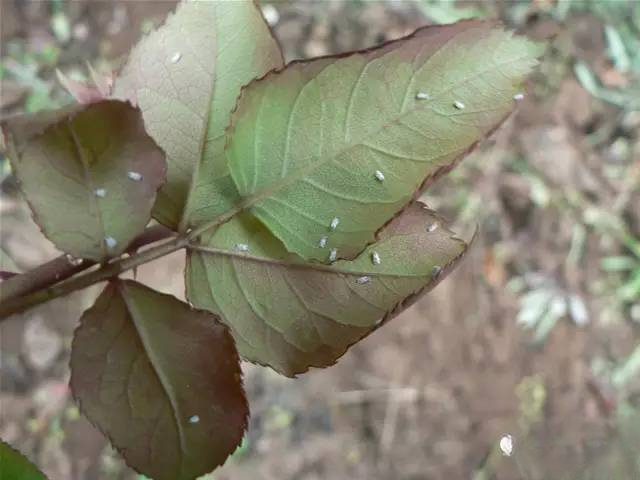
Rose powdery mildew
【Symptoms】 In the early stage, the diseased leaves show chlorotic yellow spots, which then expand and become covered with white powder, and curl, shrink and thicken. The petioles and tender shoots become slightly swollen and bend in the opposite direction after infection, and the flower buds become deformed after infection. In severe cases, the leaves turn yellow and the plants become weak.
[Occurrence pattern] The pathogen overwinters on buds, leaves, and branches and is spread by wind. The most suitable temperature for the disease is 17-25℃, and the peak period is from May to June and from September to October. The disease is prone to occur when there is too much nitrogen fertilizer or too little potassium fertilizer in the soil.
【Prevention and control methods】 ① To prevent the disease, pay attention to ventilation, do not plant too densely; do not make the air too humid; increase light; apply more phosphorus fertilizer. ② At present, the best medicine for preventing and controlling this disease is BASF's Cuibei (1 gram to 3 to 5 pounds of water) and Italy's Yisabao (1 ml to 3 pounds of water). The dispensing tool can be a syringe. For prevention, you can choose the slightly toxic Polygen (1 gram to 1 pound of water)
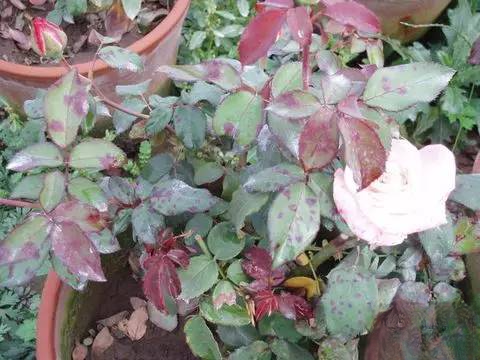
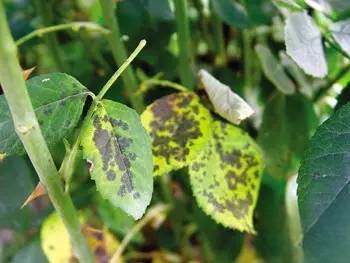
Black spot disease
[Symptoms] The leaves, pedicels and young branches of roses can be affected. The spots are initially seed brown to brown spots, which then expand and turn black or dark brown, often surrounded by yellow halos. In severe cases, all the middle and lower leaves of the plant fall off, and the branches die.
[Occurrence pattern] The pathogen overwinters in diseased branches and leaves or fallen leaves and is spread by wind and rain. The disease is most serious after late summer. High temperature and drought spread slowly, and weak plants are prone to the disease.
【Prevention and control methods】 ① Remove diseased leaves in time and prune diseased plants heavily in winter. ② Prune frequently during the growing season and keep ventilation good. ③ You can use Yisabao (1ml to 3 pounds of water), 20% fenpropimorph microemulsion (1ml to 3 pounds of water), and Nadiwen (1 gram to 5 pounds of water). For prevention, you can choose the slightly toxic PolyGram (1 gram to 1 pound of water).
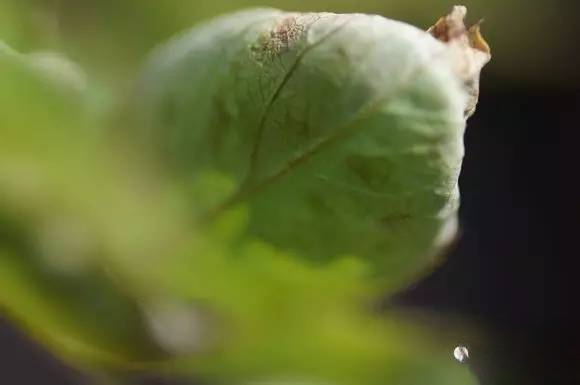
Rose leaf blight
[Symptoms] It occurs on the leaves of roses. Initially, yellow-green pinpoint spots appear on the leaf surface. Later, the spots expand to become round or irregular in shape, with purple edges. After expansion, they become connected and the boundary between the diseased parts is obvious. Later, small black spots appear on the diseased parts, and the edges of the diseased leaves look like they are burned.
[Occurrence pattern] The pathogen overwinters in diseased leaves or soil and spreads through wind and rain. Old leaves and weak branches are more susceptible to disease during rainy seasons and when management is rough.
【Prevention and control methods】 ① Remove and destroy diseased leaves in time. ② Select disease-resistant varieties, plant at reasonable density, and strengthen maintenance. ③ Spray with 500-800 times dilution of 75% chlorothalonil wettable powder. Dow AgroSciences Green Dasheng (1 gram to 1 pound of water) and Bayer's Antaisheng (1 gram to 1 pound of water) ④ Spray carbendazim and other drugs for prevention and control in the early stage of the disease.
Rose root cancer
[Symptoms] Tumors of varying sizes and shapes appear on the roots and stems of roses, the plants grow poorly, the branches and leaves are short, the leaves turn yellow and fall early, and the flowers are small or do not bloom.
[Occurrence pattern] The pathogen survives in the soil and is spread by water and tools. The tumor is small, soft and white in the early stage, and then gradually increases in size and turns dark brown. The surface is rough and cracked, and the texture is hard and woody.
[Prevention and control methods] Try to avoid repeated cropping in open fields, improve the grafting level, change the grafting method, reduce wounds and avoid infection.
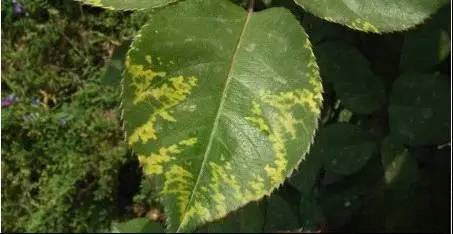
Rose mosaic disease
[Symptoms] The main symptoms are mosaic, some are ring-shaped spots or oak leaf-like patterns, and some are chlorotic spots, yellow veins or dwarfing.
[Occurrence pattern] Viral diseases can be spread by using infected plants as propagation materials, contact with sap, and piercing-sucking pests. Strong light and drought in summer are conducive to the appearance and spread of symptoms.
【Prevention and control methods】 ①Avoid using diseased plants as propagation materials. ②Pull out and destroy diseased plants in time. ③Use disease-resistant varieties or tissue culture seedlings. ④Pay attention to the prevention and control of aphids and other vectors during the growing season. ⑤Spray amino oligosaccharides aqueous solution at the early stage of the disease to inhibit the spread of the virus.

Rose Blossom End
[Symptoms] It occurs on rose flowers and pedicels. The initial lesions are located at the base of the outer petals. They are small, fluffy brown spots. After they expand, the flowers are covered with brown spots until they turn yellow-brown and dry up, and black granular substances appear.
[Occurrence pattern] The pathogen overwinters on the remains of diseased plants and is spread by wind and rain. It is prone to disease when the plants are weak and the humidity is high.
【Prevention and control methods】 ① Choose disease-resistant varieties and keep the environment ventilated and light-permeable. ② Spray lime sulfur, diffluanid, carbendazim and other pesticides for prevention and control.
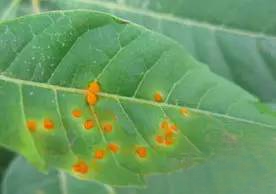
Rose rust
[Symptoms] In the early stage of the disease, small spots appear on the leaf surface with light green halos on the edges. Then the spots expand and become irregular in shape, darker in color, and form tumor-like protrusions like abscesses. Brown powder can be seen after rupture.
[Occurrence pattern] This disease is a parasitic disease, often caused by overly dense plants, overly lush branches and leaves, poor ventilation or excessive humidity in the air.
【Prevention and control methods】 ① Prevention should be the main approach for this disease. Pay attention to burning the dead branches and leaves near the plants in spring and winter. ② Spray the new leaves for protection after they unfold. You can choose to spray Isabao (1ml diluted with 3 jin of water) or 25% Fenbuconazole (1ml diluted with 3 jin of water), spray once every half a month, and spray 2-3 times. ③ During the disease period, you can spray Nadiwen (1g diluted with 5 jin of water) and Holic (1ml diluted with 5 jin of water) to kill the disease.
What are the rose pests?
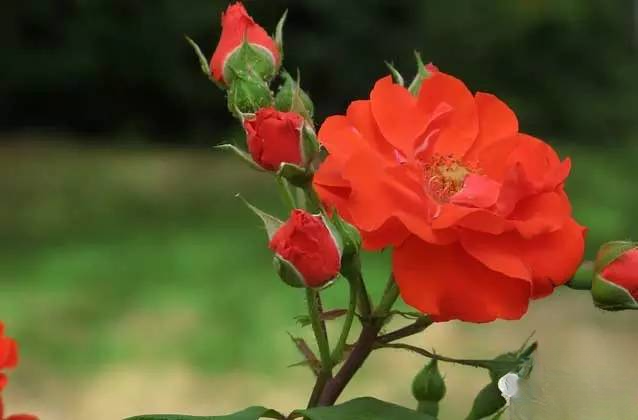
Rose whitefly
[Occurrence pattern] There are four generations a year, with the peak periods in late May, late July, late August and late September to early October. The mature larvae overwinter on the back of the leaves, causing yellowing of the leaves.
【Prevention and control methods】 ① Remove dead weeds in winter and eliminate overwintering adults. ② Use crystal trichlorfon, omethoate, dichlorvos, fenitrothion and other pesticides for prevention and control during the outbreak period.
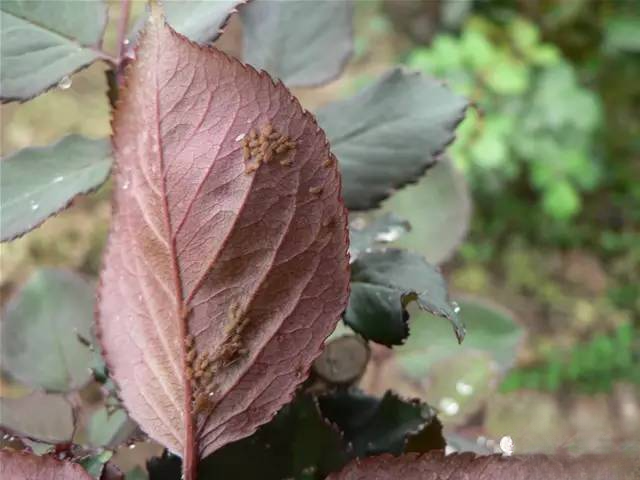
Rose aphids
[Occurrence pattern] There are 10 to 30 generations a year. The eggs overwinter in branch tips, bud axils and bark cracks. The damage begins in mid-March and is most serious in April and May.
[Prevention and control methods] Manual prevention and control: When pruning during the hibernation period, pay attention to cutting off branches with insect eggs; protect aphids from aphid wasps, aphid wasps, aphid flies, ladybugs, lacewings, etc. For chemical prevention and control, you can choose Bayer's Emeril (1 gram to 15 pounds of water) or Hisun's 70% Bixi (1 gram to 15 pounds of water).
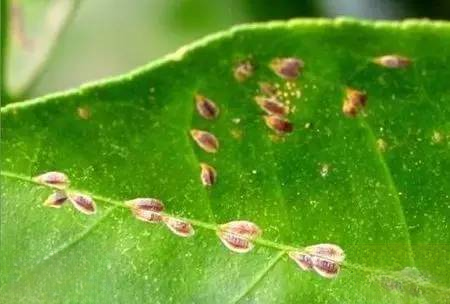
Rose scale insects
[Occurrence pattern] There are 1 to 4 generations a year, with the female insects overwintering in wax shells. They can parasitize on branches and leaves, causing the tree to become weak and grow poorly. In severe cases, the whole plant will die. The disease is more serious when the canopy is too dense and ventilation and light transmission are poor.
【Prevention and control methods】 Manual prevention and control: ① When larvae gather, cut off the insect leaves and eliminate them; ② Strengthen cultivation management to make the plants grow vigorously and enhance their insect resistance; ③ Pay attention to soil disinfection before planting; pay attention to removing weeds and dead leaves in winter and burn them in batches; ④ When purchasing flower seedlings, check whether there are scale insects parasitizing. Once found, brush the insects off as soon as possible. Drug control: Bayer's Muwangte (low toxicity) 1ml can be diluted with 3 jin of water. In winter, you can spray Baume 3-5 degree lime sulfur mixture. Spray Muwangte (1ml diluted with 3 jin of water) and Huoyan (1ml diluted with 3 jin of water) during the nymph hatching period for better prevention and control effects.
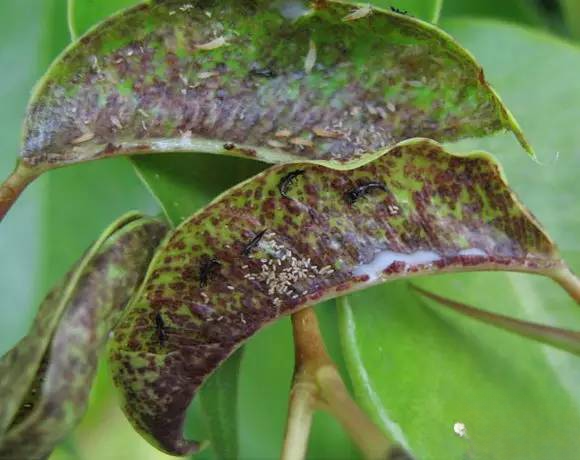
Thrips chinensis
[Occurrence pattern] There are about 10 generations a year. The adults and nymphs hide in the flowers and cause damage. The eggs are half buried under the epidermis of the petals and stamens. The insect has a varied diet. High temperature and drought are conducive to its occurrence, while heavy rain and strong wind are not conducive to its occurrence.
【Prevention and control methods】 ① Clear the dead branches and weeds in the pest area and burn them on the spot. ② Choose Guantian (1ml diluted with 3 pounds of water) or Elus (1ml diluted with 3 pounds of water) produced by Dow AgroSciences of the United States for prevention and control.
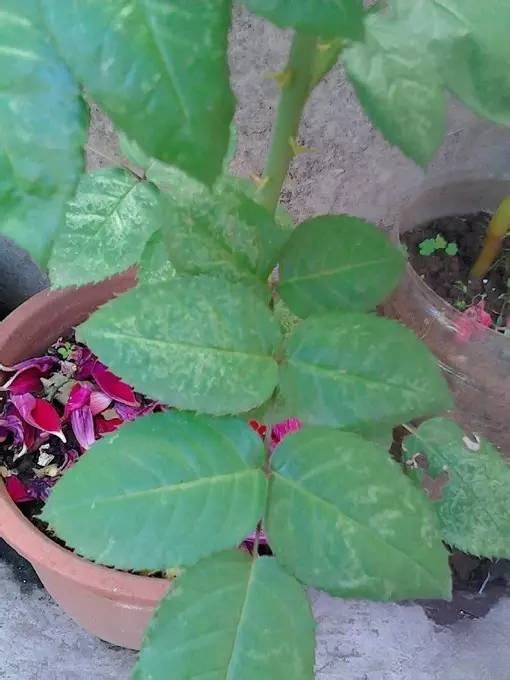
Rose red spider
[Occurrence pattern] It reproduces very quickly when the weather is hot and humid in summer. It often gathers on the back of leaves and grows by spinning silk, causing small yellow spots to appear on the leaves and gradually falling off.
[Prevention and control methods] Under high temperature conditions, you can choose dacarbamectin (1ml diluted with 2 jin of water) or 1.8% avermectin (1ml diluted with 2 jin of water), or benbuterol. Dacarbamectin (kills eggs and adults, 1ml diluted with 3 jin of water), Muwangte (1ml diluted with 3jin of water), and Miwei (1ml diluted with 3 jin of water) (these two drugs are effective against red spider eggs, but the effect on adults is poor, so they must be used in conjunction with avermectin). You can also choose Huoyan (1ml diluted with 3 jin of water)